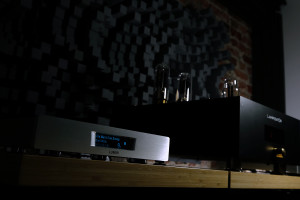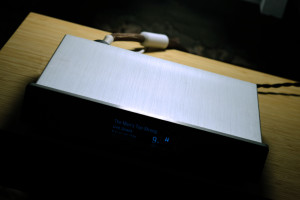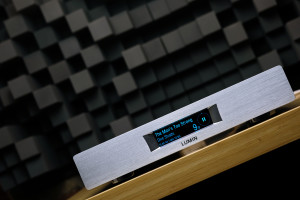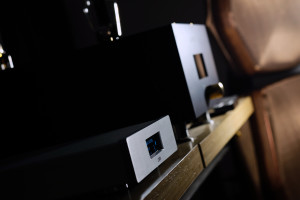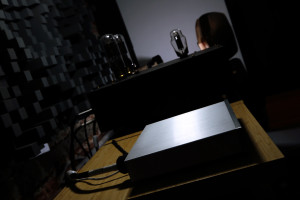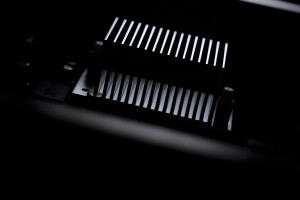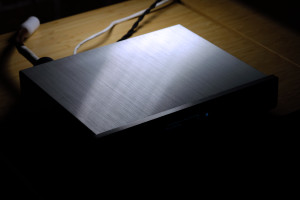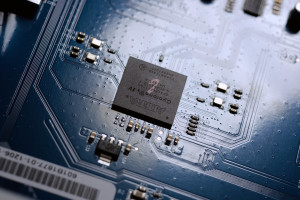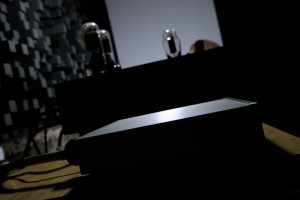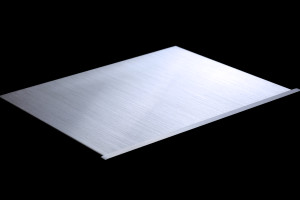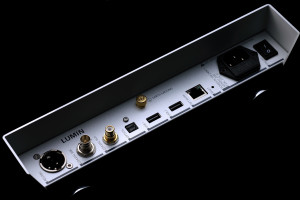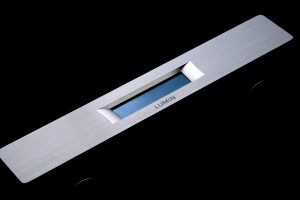For years the U1 model has been the only DAC-less and rather costly transport in Lumin’s portfolio. Now its far smaller, more affordable and as functional sibling – Lumin U1 Mini – has finally arrived and is this review’s main dish. Enjoy!
Introduction
Although Lumin requires no introduction and most audio enthusiasts should be familiar with this brand, in order to map the U1 Mini model’s place properly we need to travel in time once more. The idea behind the very first Lumin machine was born in summer 2010. At that time PlayStation 3 console got hacked and handy software released shortly after allowed tinkering with it not necessarily as its manufacturer intended. Via Sony’s blu-ray loaded machine, this code allowed extraction of raw DSD content from SACD carriers to large although perfectly usable files. Put shortly, the ripping season was on and with a bang. Enthusiasts now had the opportunity to move their entire SACD collection to HDDs and many did. Alas, a properly audiophile device capable of doing all the heavy lifting with native DSD files didn’t exist back then, which created a particular demand. Backed by its parent company – Pixel Magic Systems Ltd – the skilled Lumin team got to work. They were onto something. After extensive reworks and comparisons to pricier and functionally similar goods, in December 2012 not only said crew had a promising product ready but no native DSD capable competition around yet. They were ahead of the curve, soon the whole audio world acknowledged why and a device known simply as Lumin audiophile network player swiftly turned it upside down.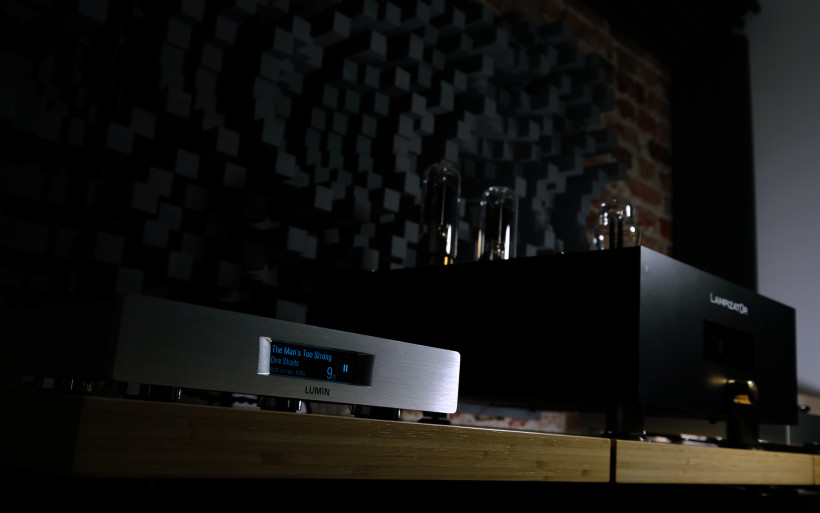 Music served in DSD wasn’t popular in 2010 and even today it’s considered as non-mainstream. Nonetheless, this particular format has been quite the fad among audio enthusiasts ever since and the same story already happened with highly likely even more popular MQA. In any case, sleek design, sane price and fantastic performance led to Lumin’s rightfully earned worldwide recognition and its portfolio expanded in logical direction shortly after. Currently it consists of five network players in total, each with D/A conversion circuitry inside; X1, S1, A1, T1 and D2. Although functionally the same, these machines occupy different price tiers. The most affordable – D2 – can be had for €2’199, whereas the recently released X1 flagship model will set you back for cool €12’990. And the original Lumin? Now it’s known as A1, but most importantly the whole core hardware range by its manufacturer is extensive.
Music served in DSD wasn’t popular in 2010 and even today it’s considered as non-mainstream. Nonetheless, this particular format has been quite the fad among audio enthusiasts ever since and the same story already happened with highly likely even more popular MQA. In any case, sleek design, sane price and fantastic performance led to Lumin’s rightfully earned worldwide recognition and its portfolio expanded in logical direction shortly after. Currently it consists of five network players in total, each with D/A conversion circuitry inside; X1, S1, A1, T1 and D2. Although functionally the same, these machines occupy different price tiers. The most affordable – D2 – can be had for €2’199, whereas the recently released X1 flagship model will set you back for cool €12’990. And the original Lumin? Now it’s known as A1, but most importantly the whole core hardware range by its manufacturer is extensive.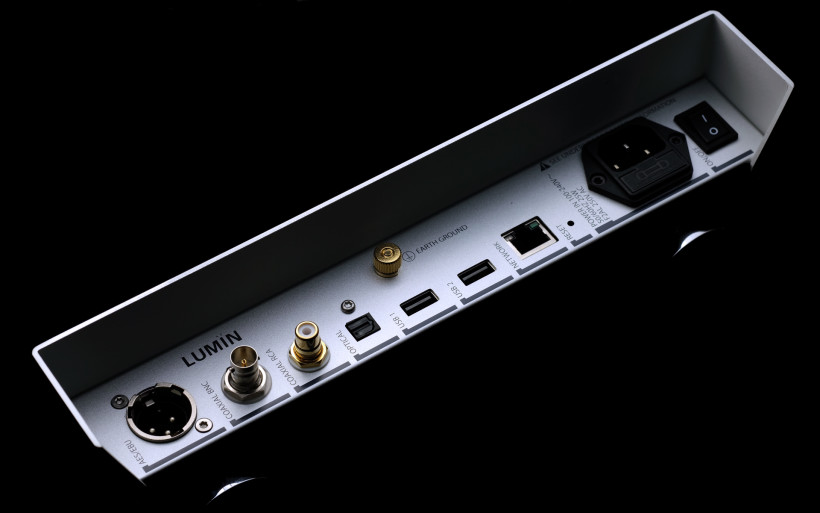 Although visually similar to its kin, Lumin M1 is a bona fide desktop do-it-all deck. A pair of passive speakers, several cables, a router, the usual RC via a smartphone or tablet is all it needs to get going. It proved to be very good for its ask. Then there are Lumin’s AMP stereo power amplifier for the first time publicly showcased in Munich 2018 and the L1 storage unit for those in favour of having their collection kept inside of a proper audiophile warehouse as capacious as 5TB. All in all, that’s quite the range, eh? Who knows, perhaps one day we’ll see a router or speakers by Lumin to have a complete setup by this company viable. Its engineers proved us many times already that they’re very skilled bunch.
Although visually similar to its kin, Lumin M1 is a bona fide desktop do-it-all deck. A pair of passive speakers, several cables, a router, the usual RC via a smartphone or tablet is all it needs to get going. It proved to be very good for its ask. Then there are Lumin’s AMP stereo power amplifier for the first time publicly showcased in Munich 2018 and the L1 storage unit for those in favour of having their collection kept inside of a proper audiophile warehouse as capacious as 5TB. All in all, that’s quite the range, eh? Who knows, perhaps one day we’ll see a router or speakers by Lumin to have a complete setup by this company viable. Its engineers proved us many times already that they’re very skilled bunch.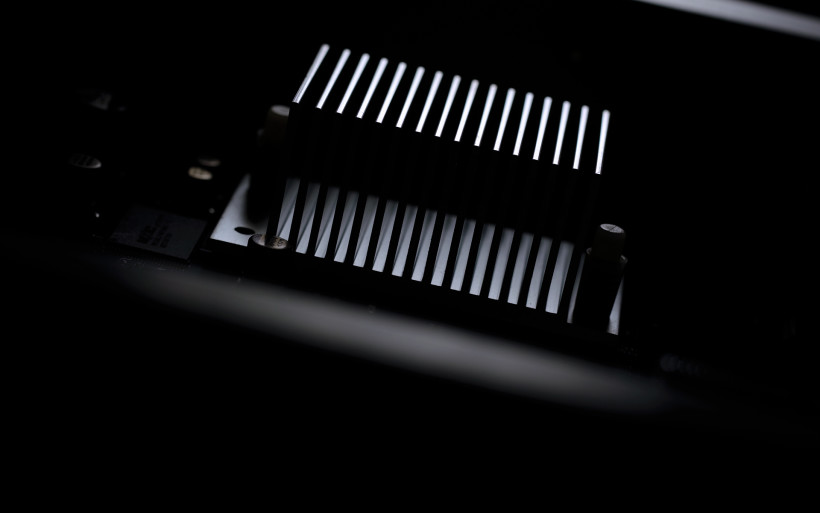 Although feeding a standalone DAC with digital data sent from Lumin’s core decks is possible, each of these was designed to be a handy multi-tasker in the first place; a network player and D/A converter served in one neatly styled package. These two functions determine their main purpose within a given setup obviously enough to leave no room for guesswork. The Lumin team is aware of this and that’s why their DAC-less U1 model has been around for years. This is one of several options to go after if you’re not willing to part with your D/A hardware or play the reduction game to have just one digital box instead of two. But priced at €6’799, Lumin U1 is anything but affordable and this review’s hero – its scaled-down and far more budget friendly version – is here to fix this. One question begs to be asked: “What took you so long?”
Although feeding a standalone DAC with digital data sent from Lumin’s core decks is possible, each of these was designed to be a handy multi-tasker in the first place; a network player and D/A converter served in one neatly styled package. These two functions determine their main purpose within a given setup obviously enough to leave no room for guesswork. The Lumin team is aware of this and that’s why their DAC-less U1 model has been around for years. This is one of several options to go after if you’re not willing to part with your D/A hardware or play the reduction game to have just one digital box instead of two. But priced at €6’799, Lumin U1 is anything but affordable and this review’s hero – its scaled-down and far more budget friendly version – is here to fix this. One question begs to be asked: “What took you so long?”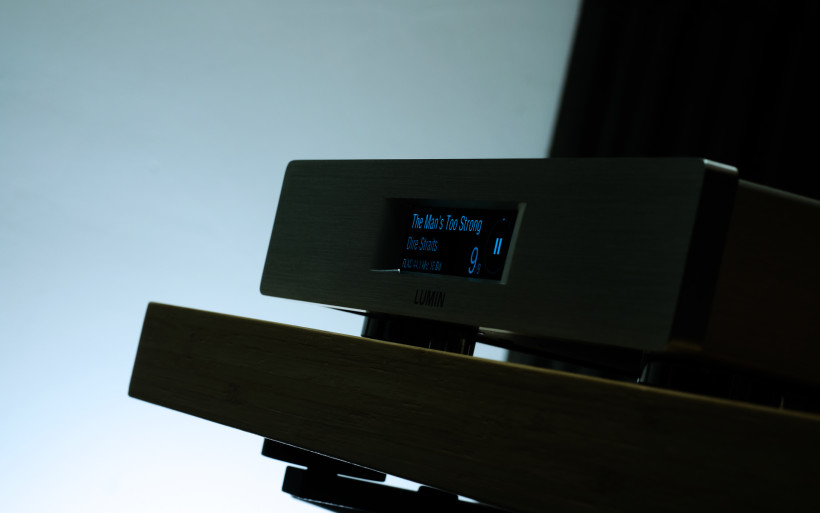 To theorycraft a bit, Lumin U1 could’ve sold like crazy for years for example, thus maybe there was no pressure to introduce any other deck of the sort? Or it might’ve been the supportive less important one since day one, hence the incentive/need to reinforce and further develop this branch of products in particular simply wasn’t there? Or perhaps there was, yet the team focused its R&D potential elsewhere? I.e. on very popular core machines and the recently released power amp as that’s what’s been going on at the Lumin camp in recent years? Who knows? And does it really make any difference now? The important bit is that space around Lumin U1 was empty for long enough and its easier on the wallet sibling was in fact needed. To take an educated plunge, if not so much for its creators, then surely for people after such products but based on a proprietary platform known to be stable as a rock and already field-tested via numerous Lumin products over the years.
To theorycraft a bit, Lumin U1 could’ve sold like crazy for years for example, thus maybe there was no pressure to introduce any other deck of the sort? Or it might’ve been the supportive less important one since day one, hence the incentive/need to reinforce and further develop this branch of products in particular simply wasn’t there? Or perhaps there was, yet the team focused its R&D potential elsewhere? I.e. on very popular core machines and the recently released power amp as that’s what’s been going on at the Lumin camp in recent years? Who knows? And does it really make any difference now? The important bit is that space around Lumin U1 was empty for long enough and its easier on the wallet sibling was in fact needed. To take an educated plunge, if not so much for its creators, then surely for people after such products but based on a proprietary platform known to be stable as a rock and already field-tested via numerous Lumin products over the years.
Build
Lumin U1 Mini is very similar to two other models by the same manufacturer; U1 and D2. With the former the newcomer shares functionality, whereas its enclosure it borrowed from the latter. The result is a DAC-less transport dressed in a fancy and very compact enclosure of (WxDxH) 300x244x60mm size and 3kg mass. It arrived snug via a pleasant woolen bag stuffed in-between two generously thick foam forms and packed in double cardboard. A pair of gloves, leaflet and brief manual were also found inside the box. There was no reason to complain.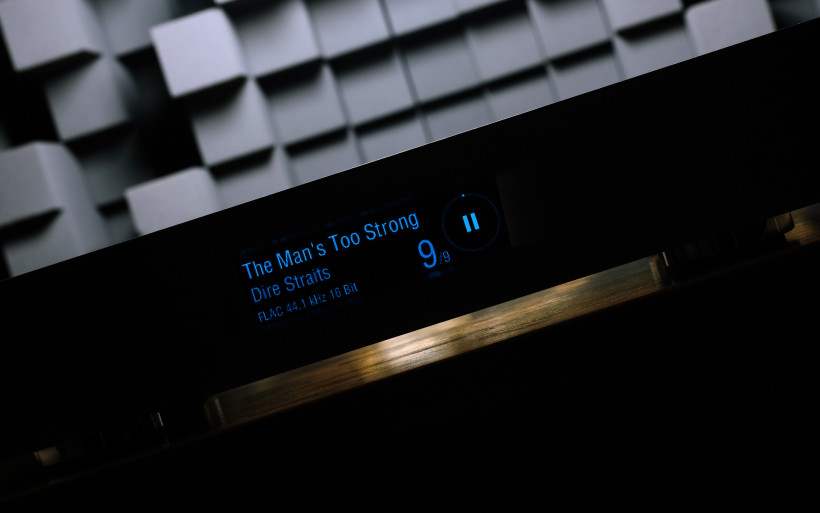 In comparison to the full-sized and heftier U1 deck, its far more affordable Mini version arrived smaller, visually less posh and without a standalone PSU, which is now different and hid inside the product. All these changes are of no surprise at all. CNC-milled aluminium ain’t cheap, round housings are exclusive for pricey Lumin hardware for a reason and that’s understandable. In-built power supply trims price and required space, thus in case of petite decks such as the U1 Mini it made sense to go all internal with it. Listed reduction measures are justified in my book, simply because the price difference between the two U-machines is substantial. If it were anything but then who knows, we might’ve burned a stingy witch or two or at least do some light broiling. But all things considered I honestly saw no reason to.
In comparison to the full-sized and heftier U1 deck, its far more affordable Mini version arrived smaller, visually less posh and without a standalone PSU, which is now different and hid inside the product. All these changes are of no surprise at all. CNC-milled aluminium ain’t cheap, round housings are exclusive for pricey Lumin hardware for a reason and that’s understandable. In-built power supply trims price and required space, thus in case of petite decks such as the U1 Mini it made sense to go all internal with it. Listed reduction measures are justified in my book, simply because the price difference between the two U-machines is substantial. If it were anything but then who knows, we might’ve burned a stingy witch or two or at least do some light broiling. But all things considered I honestly saw no reason to.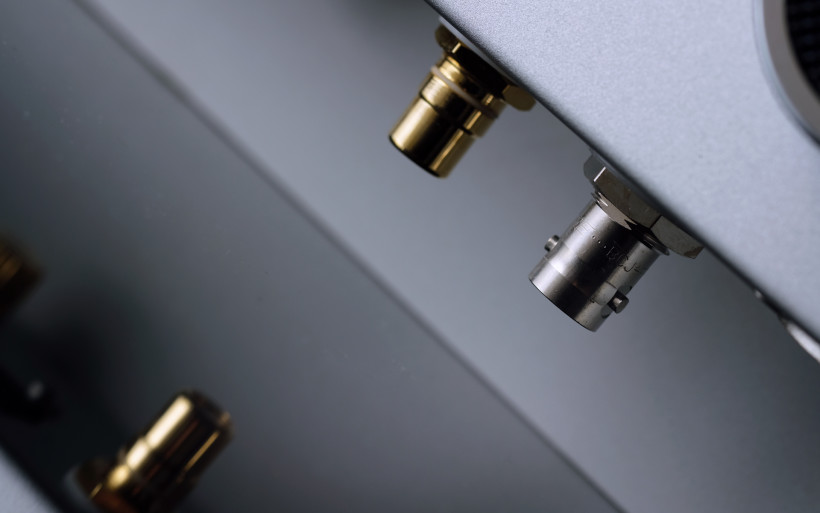 Lumin U1 Mini looks and feels as good as any other budget machine by the same team, its build quality level is perfectly safe. Large brushed and thick aluminium slab is the product’s front, also occupied via a small display located in the middle and the manufacturer’s logo a bit below. No buttons, knobs or holes but likeable simplicity instead. LCD is the usual suspect seen in most of Lumin’s hardware; turquoise marks with easily noticeable pixels served on black background list information standard and sufficient up close. Track’s name along with its author, file type and bitrate plus round progress wheel did the trick for me. The option to gradually dim and even turn off everything completely via Lumin’s proprietary software is a plus. One bent sheet of brushed aluminium forms top and side walls and additionally extends into fairly large hood at the product’s rear to neatly hide all connected cables. Large IEC plugs are a no-go and the regularly bulky C-MARC power snake was a very tight fit. That’s the only downside of U1 Mini’s design and a small one at that.
Lumin U1 Mini looks and feels as good as any other budget machine by the same team, its build quality level is perfectly safe. Large brushed and thick aluminium slab is the product’s front, also occupied via a small display located in the middle and the manufacturer’s logo a bit below. No buttons, knobs or holes but likeable simplicity instead. LCD is the usual suspect seen in most of Lumin’s hardware; turquoise marks with easily noticeable pixels served on black background list information standard and sufficient up close. Track’s name along with its author, file type and bitrate plus round progress wheel did the trick for me. The option to gradually dim and even turn off everything completely via Lumin’s proprietary software is a plus. One bent sheet of brushed aluminium forms top and side walls and additionally extends into fairly large hood at the product’s rear to neatly hide all connected cables. Large IEC plugs are a no-go and the regularly bulky C-MARC power snake was a very tight fit. That’s the only downside of U1 Mini’s design and a small one at that.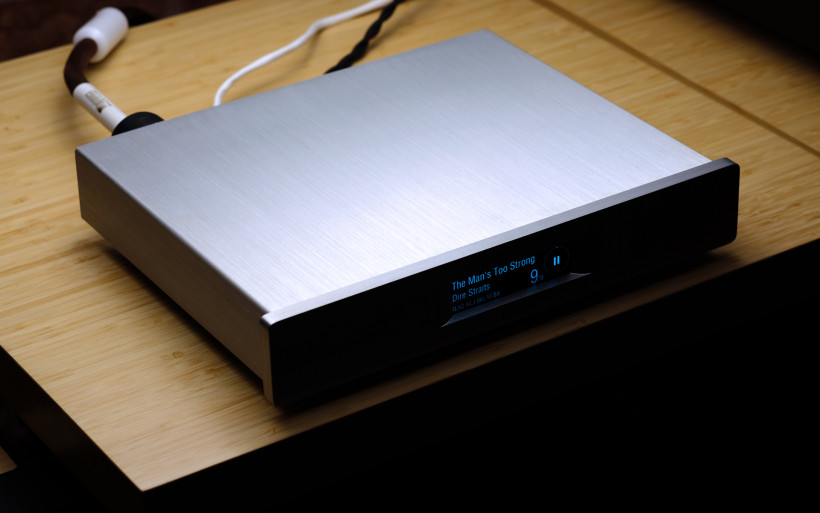 Four aluminium feet with rubber washers are to be found on the U1 Mini’s underbelly and five digital outputs in total occupy its rear; AES/EBU, coaxial BNC and RCA, TOSLINK and two USB type A ports. On the fly I could switch between most via input selection turns on my LampizatOr Pacific to hear their sonics. Flat USB sockets can be also used as inputs for portable storage units; USB sticks, USB-powered SSDs etc. One grounding pin and RJ45 input next to digital outs are followed by a reset button hid inside of a small opening, then there’s the IEC inlet with self-replaceable fuse and the main on/off switch. Getting to the innards of Lumin U1 Mini wasn’t difficult at all and the view inside seemed familiar to say the least; one FPGA responsible for clock distribution was surrounded by four low-noise oscillators, the main chip was hid under a small radiator and the not linear but SMPS unit also found in Lumin’s D2 machine was shielded. All in all, Lumin U1 Mini is visually vanilla-flavoured and minimalist, nicely assembled and available in silver or black. It handles 1bit stream via USB up to DSD256, works with PCM up to 32bit/384kHz on USB and is capable of sending PCM and DSD up to 24bit/192kHz and DSD128 (DoP) respectively via remaining digital outs.
Four aluminium feet with rubber washers are to be found on the U1 Mini’s underbelly and five digital outputs in total occupy its rear; AES/EBU, coaxial BNC and RCA, TOSLINK and two USB type A ports. On the fly I could switch between most via input selection turns on my LampizatOr Pacific to hear their sonics. Flat USB sockets can be also used as inputs for portable storage units; USB sticks, USB-powered SSDs etc. One grounding pin and RJ45 input next to digital outs are followed by a reset button hid inside of a small opening, then there’s the IEC inlet with self-replaceable fuse and the main on/off switch. Getting to the innards of Lumin U1 Mini wasn’t difficult at all and the view inside seemed familiar to say the least; one FPGA responsible for clock distribution was surrounded by four low-noise oscillators, the main chip was hid under a small radiator and the not linear but SMPS unit also found in Lumin’s D2 machine was shielded. All in all, Lumin U1 Mini is visually vanilla-flavoured and minimalist, nicely assembled and available in silver or black. It handles 1bit stream via USB up to DSD256, works with PCM up to 32bit/384kHz on USB and is capable of sending PCM and DSD up to 24bit/192kHz and DSD128 (DoP) respectively via remaining digital outs.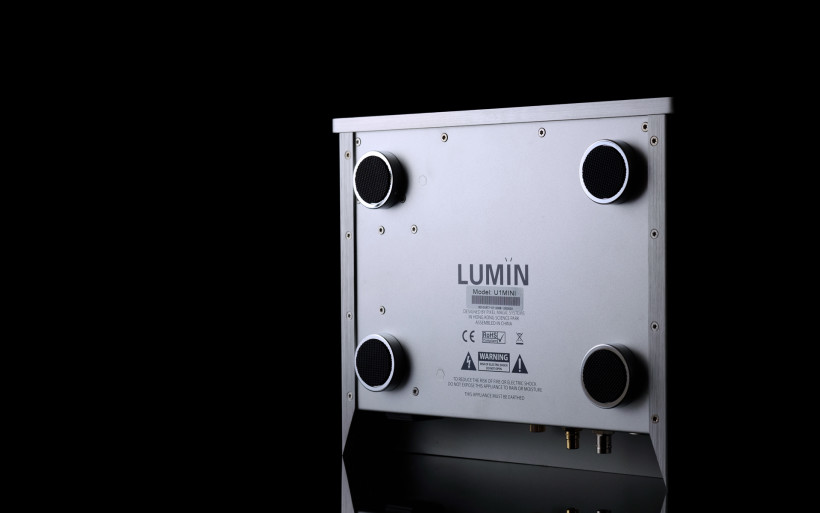 The setup process was nothing short but a breeze. Once my loaner was connected to a router, the Lumin app installed on my iPhone 7S in an instant recognized connected pendrive, listed all available content and my DAC was good to go. There was no trial&error or any issues along the road involved but immediate readiness instead. This proved me once more that Lumin’s proprietary software not only is intuitive and very simple to use, but also free from hiccups, crashes and any unpleasantries of the sort. During two weeks of intense usage not even once it pulled any unwanted stunt on me. All files the U1 Mini was fed with it kindly passed to my Pacific DAC pronto, the app itself was very responsive and the overall sensation I can only describe as top notch. Who knows, perhaps if my network playback needs were more complex and included i.e. one of many streaming services available (Tidal, Spotify etc.) or Android based RC, then a thing or two worth addressing/improving/reworking I’d have found. Nada on this count, which implies a job really well done, as per usual with Lumin. One last thing to note, though. Since this review’s hero doesn’t sport any storage of its own, you need to feed it with files either via attached storage or NAS connected to the same LAN.
The setup process was nothing short but a breeze. Once my loaner was connected to a router, the Lumin app installed on my iPhone 7S in an instant recognized connected pendrive, listed all available content and my DAC was good to go. There was no trial&error or any issues along the road involved but immediate readiness instead. This proved me once more that Lumin’s proprietary software not only is intuitive and very simple to use, but also free from hiccups, crashes and any unpleasantries of the sort. During two weeks of intense usage not even once it pulled any unwanted stunt on me. All files the U1 Mini was fed with it kindly passed to my Pacific DAC pronto, the app itself was very responsive and the overall sensation I can only describe as top notch. Who knows, perhaps if my network playback needs were more complex and included i.e. one of many streaming services available (Tidal, Spotify etc.) or Android based RC, then a thing or two worth addressing/improving/reworking I’d have found. Nada on this count, which implies a job really well done, as per usual with Lumin. One last thing to note, though. Since this review’s hero doesn’t sport any storage of its own, you need to feed it with files either via attached storage or NAS connected to the same LAN.
Sound
In order to review Lumin U1 Mini, either this machine fed my LampizatOr Pacific DAC or my laptop. Early on both transports exploited USB interface but later the silver deck also sent data further via its remaining digital outs; AES/EBU, BNC and RCA. The analog part in use were two setups; either soundkaos Libération and Bakoon AMP-13R combo, or Boenicke W8 married to Kinki Studio EX-M1 integrated amp. My smartphone served as a handy RC loaded with the original Lumin app. It’s also important to know that I’ve never heard this manufacturer’s large U1 deck, thus I can’t comment on any sound quality shifts in comparison to its smaller version. The former fought against my laptop exclusively, had its digital volume control turned off and no upsampling involved. All files the U1 Mini drew from a 32GB pendrive connected to its rear directly.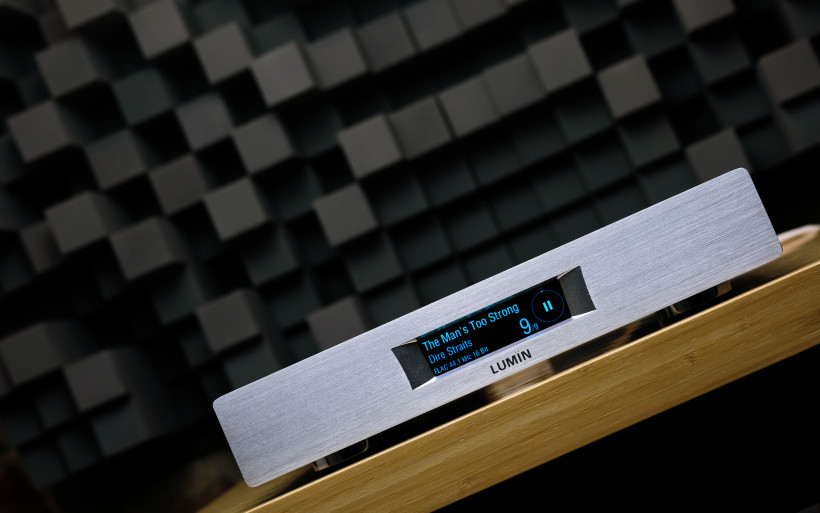 Pacific DAC and Lumin U1 Mini allowed for several connections worth investigating. The latter machine is capable of sending digital data from all of its outputs without any additional work involved, whereas my DAC’s digital inputs can be switched on the fly via its golden knob to instantly hear any differences between them. In effect the two decks communicated via three cables in total – AES/EBU, USB and BNC – though only one at a time was selected. Files up to 24bit/192kHz were used for the sake of remaining in the native playback realm. Red Book material is what I’ve been mostly using since obtaining the Pacific. All in all, logistics couldn’t have been any simpler.
Pacific DAC and Lumin U1 Mini allowed for several connections worth investigating. The latter machine is capable of sending digital data from all of its outputs without any additional work involved, whereas my DAC’s digital inputs can be switched on the fly via its golden knob to instantly hear any differences between them. In effect the two decks communicated via three cables in total – AES/EBU, USB and BNC – though only one at a time was selected. Files up to 24bit/192kHz were used for the sake of remaining in the native playback realm. Red Book material is what I’ve been mostly using since obtaining the Pacific. All in all, logistics couldn’t have been any simpler.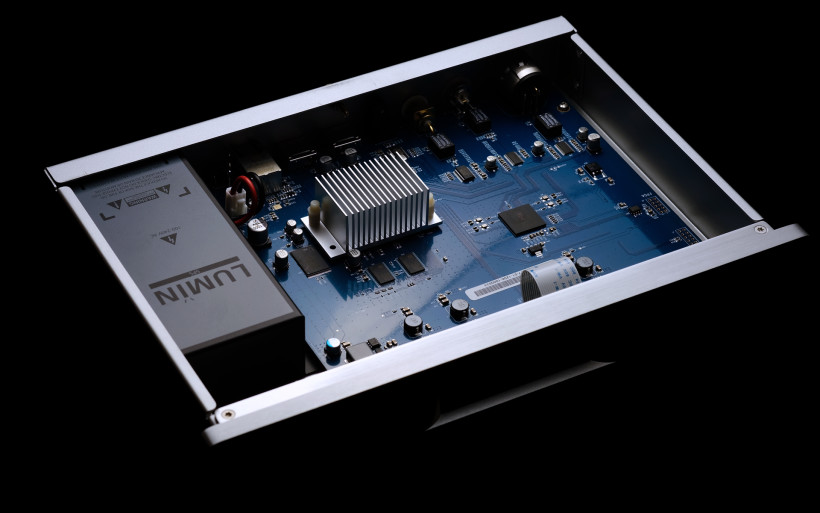 The exercise with three different digital connections involved netted quite predictable results. In short, the USB option turned out to be the worst case scenario. Although perfectly adequate for the job, it was audibly inferior to the AES/EBU. The former sounded stiffer in comparison, sported slimmer, boomier and less round low FR with a bit limited downstairs reach. Imaging wise it also lacked order and was flatter to be finally viewed as less vivid and three-dimensional, whereas sensible textural paleness pretty much closed the case. In a nutshell, USB in general sounded less lively and more artificial, whereas all remaining connections performed similarly on general voicing and quality counts. It was in fact difficult to tell any differences between them.
The exercise with three different digital connections involved netted quite predictable results. In short, the USB option turned out to be the worst case scenario. Although perfectly adequate for the job, it was audibly inferior to the AES/EBU. The former sounded stiffer in comparison, sported slimmer, boomier and less round low FR with a bit limited downstairs reach. Imaging wise it also lacked order and was flatter to be finally viewed as less vivid and three-dimensional, whereas sensible textural paleness pretty much closed the case. In a nutshell, USB in general sounded less lively and more artificial, whereas all remaining connections performed similarly on general voicing and quality counts. It was in fact difficult to tell any differences between them. Music with AES/EBU sounded deeper and nicely moisturized in comparison to the USB option, but also more delicate, suave and a notch darker. All these descriptive measures indicated seasoning of finer grade, which translated to music served in posher, a bit rounder and subjectively more enjoyable fashion. Although not of night and day magnitude, let me stress again that said differences were audible enough to my ears to opt for anything but USB past the evaluation phase, hi-rez be damned. Nonetheless, after several days of casual listening, this interface initially mapped as inferior proved to be useful with particular repertoire i.e. snappy recordings based on real string instruments served rather directly. Picture Rodrigo y Gabriela’s take on “Orion” originally by Metallica. Acoustic guitars on this track I enjoy more edgy and less mellow to have ‘em properly wild, raw and direct and this exactly USB did. In such rare scenarios shallower image and drier attitude didn’t bother me at all.
Music with AES/EBU sounded deeper and nicely moisturized in comparison to the USB option, but also more delicate, suave and a notch darker. All these descriptive measures indicated seasoning of finer grade, which translated to music served in posher, a bit rounder and subjectively more enjoyable fashion. Although not of night and day magnitude, let me stress again that said differences were audible enough to my ears to opt for anything but USB past the evaluation phase, hi-rez be damned. Nonetheless, after several days of casual listening, this interface initially mapped as inferior proved to be useful with particular repertoire i.e. snappy recordings based on real string instruments served rather directly. Picture Rodrigo y Gabriela’s take on “Orion” originally by Metallica. Acoustic guitars on this track I enjoy more edgy and less mellow to have ‘em properly wild, raw and direct and this exactly USB did. In such rare scenarios shallower image and drier attitude didn’t bother me at all.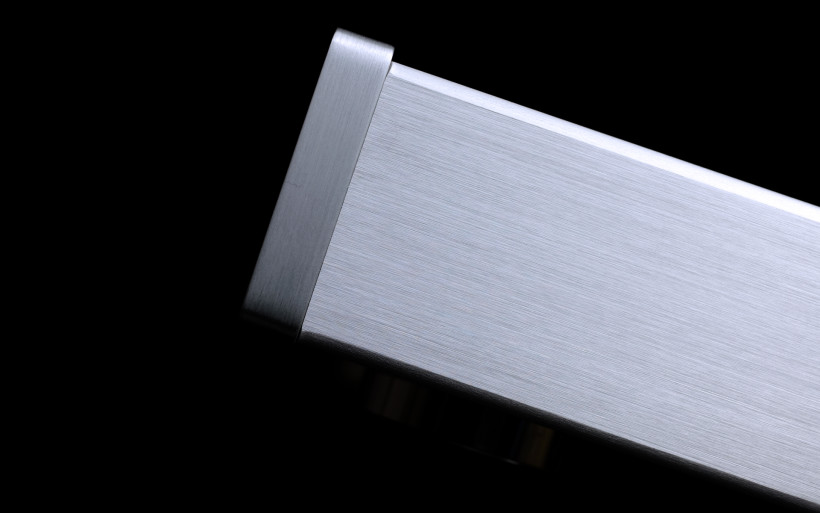 Once the digital in/out matter was sorted, I do wondered whether there was a way to improve the USB connection between my DAC and Lumin U1 Mini. Here iFi audio’s iGalvanic3.0, iUSB3.0, iPower 9V and three 0.5m long Mercury cables came into play. Although some issues were expected early on, surprisingly this contraption communicated with both hardware ends from the get-go. The outcome was positive to a point where any differences between USB and remaining digital connections were mild at best. The Britsh team on the job usually performs some easygoing liposuction in favour of agility increase, but interestingly this wasn’t the case this time around. The outcome of having five extra items along the road was the most bass intense performance of all scenarios available, though perfectly controlled, not boomy at all and in general up there on refinement. Difference in how low FR was served was the only meaningful shift I was able to single out.
Once the digital in/out matter was sorted, I do wondered whether there was a way to improve the USB connection between my DAC and Lumin U1 Mini. Here iFi audio’s iGalvanic3.0, iUSB3.0, iPower 9V and three 0.5m long Mercury cables came into play. Although some issues were expected early on, surprisingly this contraption communicated with both hardware ends from the get-go. The outcome was positive to a point where any differences between USB and remaining digital connections were mild at best. The Britsh team on the job usually performs some easygoing liposuction in favour of agility increase, but interestingly this wasn’t the case this time around. The outcome of having five extra items along the road was the most bass intense performance of all scenarios available, though perfectly controlled, not boomy at all and in general up there on refinement. Difference in how low FR was served was the only meaningful shift I was able to single out. The USB chain by iFi audio added hefty €1’200+ to the final tab, yet upped the USB ante audibly. Nonetheless, after all experiments conducted and hardware involved, it still remains a mystery to me which one of the two main devices was the culprit responsible for its performance. Was it my DAC the one to blame exclusively? Perhaps Lumin’s latest transport only? Maybe both of these equally? Or neither due to USB sound wise inferior to AES/EBU and the lot by design? Though the Pacific’s USB in is susceptible to tweaks, I honestly can’t say. To know for sure I’d have to connect Lumin U1 Mini to a D/A converter with this input impervious to such additions and move from there. In any case, once the matter above was sorted, it was high time to find out what Lumin’s latest did in general and in comparison to my laptop. In order to create equal working conditions for both transports, each was connected to my DAC via 0.5m long Mercury leash by iFi audio.
The USB chain by iFi audio added hefty €1’200+ to the final tab, yet upped the USB ante audibly. Nonetheless, after all experiments conducted and hardware involved, it still remains a mystery to me which one of the two main devices was the culprit responsible for its performance. Was it my DAC the one to blame exclusively? Perhaps Lumin’s latest transport only? Maybe both of these equally? Or neither due to USB sound wise inferior to AES/EBU and the lot by design? Though the Pacific’s USB in is susceptible to tweaks, I honestly can’t say. To know for sure I’d have to connect Lumin U1 Mini to a D/A converter with this input impervious to such additions and move from there. In any case, once the matter above was sorted, it was high time to find out what Lumin’s latest did in general and in comparison to my laptop. In order to create equal working conditions for both transports, each was connected to my DAC via 0.5m long Mercury leash by iFi audio.
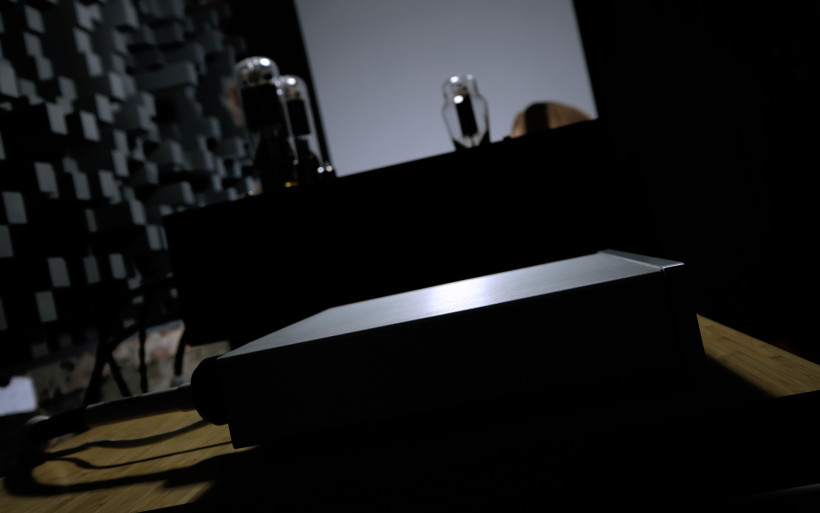 In the past I’ve had the pleasure to review two Lumin machines, audition four in total and all sounded quite similar regardless of their type and price. Early on this observation gave a way to think that the so-called Lumin voice does exist indeed and it became sort of a routine to point this out in my reports about this operation’s products. Lazy journo? Hardly. One mild exception aside, Nic Poulson of Trilogy also tunes his every hardware along similar key. For a reason though, he’s been delivering goods personally appealing to him, yet the important bit is that propagation of unified sound profile across the board requires deep engineering know-how, golden ears and is a thing to admire in my book. On these counts Mr Poulson and the Lumin team seem to be like-minded people very much into music served as a form of art and not dissective benchmark, which incidentally rings my subjective bells as well.
In the past I’ve had the pleasure to review two Lumin machines, audition four in total and all sounded quite similar regardless of their type and price. Early on this observation gave a way to think that the so-called Lumin voice does exist indeed and it became sort of a routine to point this out in my reports about this operation’s products. Lazy journo? Hardly. One mild exception aside, Nic Poulson of Trilogy also tunes his every hardware along similar key. For a reason though, he’s been delivering goods personally appealing to him, yet the important bit is that propagation of unified sound profile across the board requires deep engineering know-how, golden ears and is a thing to admire in my book. On these counts Mr Poulson and the Lumin team seem to be like-minded people very much into music served as a form of art and not dissective benchmark, which incidentally rings my subjective bells as well.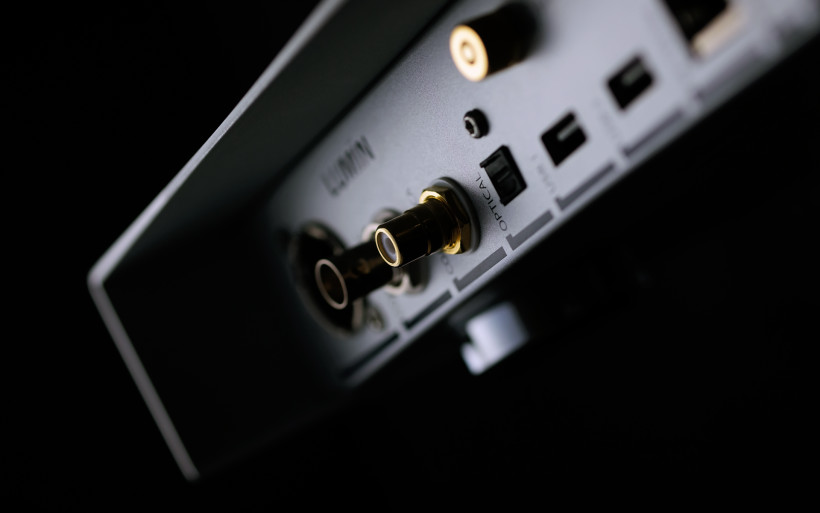 Lumin’s machines known to me favoured nicely moisturized and complex musical tissue, openness, vividness, pleasure and freedom from digital tint, sharpness and other associated unpleasantries. Neither of these decks served solely as transparent magnifying glass to music. Insight into recordings was granted each time from what I remember, yet happened naturally as an outcome of finely removed grain and completely claptrap-free attitude. When Lumin U1 Mini finally arrived, it became obvious in a jiffy that its voicing followed in the same well-known vein. The sensation was comparable to greeting a dear friend long time not seen, whereas getting up to speed was utmost easygoing. This report’s deck felt very familiar, even comforting in a way and as far from boring as possible.
Lumin’s machines known to me favoured nicely moisturized and complex musical tissue, openness, vividness, pleasure and freedom from digital tint, sharpness and other associated unpleasantries. Neither of these decks served solely as transparent magnifying glass to music. Insight into recordings was granted each time from what I remember, yet happened naturally as an outcome of finely removed grain and completely claptrap-free attitude. When Lumin U1 Mini finally arrived, it became obvious in a jiffy that its voicing followed in the same well-known vein. The sensation was comparable to greeting a dear friend long time not seen, whereas getting up to speed was utmost easygoing. This report’s deck felt very familiar, even comforting in a way and as far from boring as possible.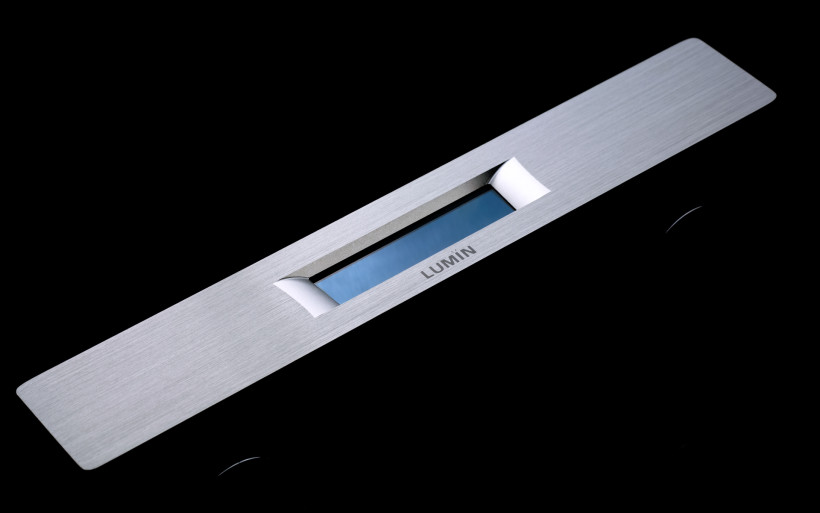 Although Lumin U1 Mini’s particular approach leaned towards textural generosity, smoothness and the centre of gravity a wee bit below the middle, the grand master plan was executed in finely balanced fashion nonetheless. The product neither elevated details at a cost of overall heft and presence, nor played the hot, fuzzy and diluted game. Instead it showcased blend of features typically reserved for pricier machines and i.e. Fidata HFAS1-S10U comes to mind. Of course our inaccurate memory is not reliable, thus I’d have to compare the two head-to-head to form any meaningful opinion in the matter and the recently reviewed impressive SOtM sMS-200ultra + sPS-500 combo highly likely would additionally spice things up in this context. Still, the U1 Mini sang like a fully flourished and mature product free from trade-offs associated with its price. Its seasoning indicated higher game and this I’ve found truly impressive.
Although Lumin U1 Mini’s particular approach leaned towards textural generosity, smoothness and the centre of gravity a wee bit below the middle, the grand master plan was executed in finely balanced fashion nonetheless. The product neither elevated details at a cost of overall heft and presence, nor played the hot, fuzzy and diluted game. Instead it showcased blend of features typically reserved for pricier machines and i.e. Fidata HFAS1-S10U comes to mind. Of course our inaccurate memory is not reliable, thus I’d have to compare the two head-to-head to form any meaningful opinion in the matter and the recently reviewed impressive SOtM sMS-200ultra + sPS-500 combo highly likely would additionally spice things up in this context. Still, the U1 Mini sang like a fully flourished and mature product free from trade-offs associated with its price. Its seasoning indicated higher game and this I’ve found truly impressive.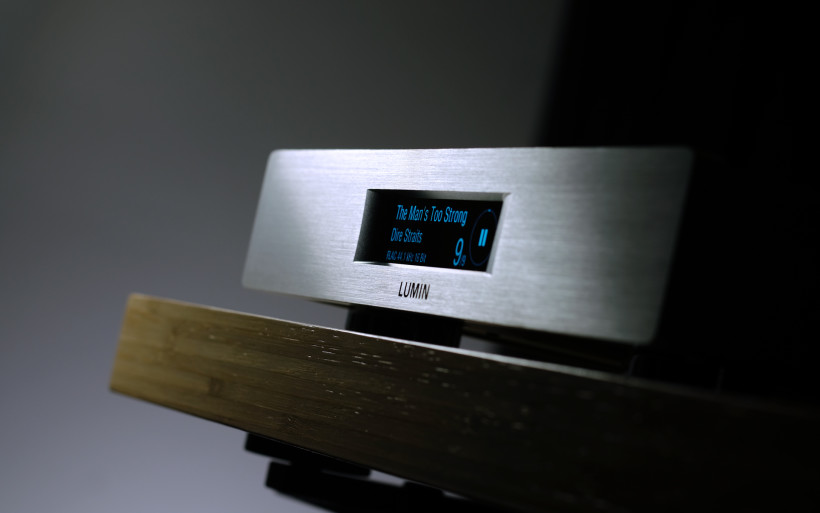 When the time has come to finally compare my laptop to the U1 Mini model, the result was quite easy to predict. The former performed more contour all across the board, but the issue was in the lowest department. Trimmed in that region, a bit elevated upstairs and not as full, its bass was wobbly and sounded a bit hollow. The Mini injected mild amount of fat and roundness yet remained as speedy as per usual to generate nice slam when needed without leaving any bill for such a pleasant service. This attitude was also replicated in the mid realm. Interestingly, even though this champ got the plump textural part just right, no loss of clarity or dilution followed. Lumin U1 Mini served highs weightier, extended better and far subtler on demand, whereas the final blow it delivered via gorgeous blackness behind multiple rows of instruments, their fine separation and very much organic display. The quality leap from my daily driver to Lumin’s petite box was severe and the nicer recordings were on, the more potently the latter did the same job.
When the time has come to finally compare my laptop to the U1 Mini model, the result was quite easy to predict. The former performed more contour all across the board, but the issue was in the lowest department. Trimmed in that region, a bit elevated upstairs and not as full, its bass was wobbly and sounded a bit hollow. The Mini injected mild amount of fat and roundness yet remained as speedy as per usual to generate nice slam when needed without leaving any bill for such a pleasant service. This attitude was also replicated in the mid realm. Interestingly, even though this champ got the plump textural part just right, no loss of clarity or dilution followed. Lumin U1 Mini served highs weightier, extended better and far subtler on demand, whereas the final blow it delivered via gorgeous blackness behind multiple rows of instruments, their fine separation and very much organic display. The quality leap from my daily driver to Lumin’s petite box was severe and the nicer recordings were on, the more potently the latter did the same job.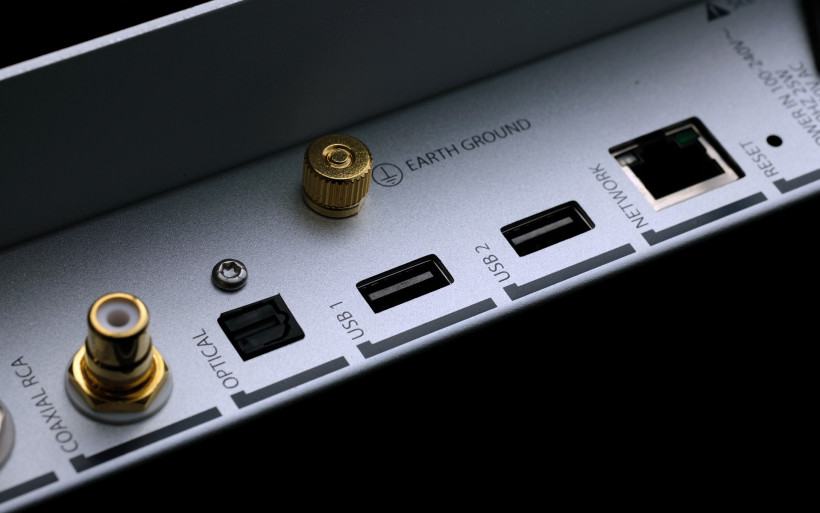 Lumin U1 Mini turned out to be a fabulous performer where it mattered the most. It served music in utmost pleasant and tangible way but didn’t prettify it. The difference between tracks of various quality was nothing short but substantial to have the usual culprits marginally better at best yet still unlistenable. The Mini’s voicing clearly favoured meaty, lively, humane and charming side of music. But this machine wasn’t stripped from features essential in knowing what’s what with it or had these reduced. Detail retrieval, dynamic contrasts, agility, openness and effortlessness all arrived in the same bus though purposely occupied further seats to be prioritized differently. Lumin U1 Mini represents the full care package far too tastefully executed to lay its every trait out right away. That’s why a degree of audio awareness and time are required in order to grasp this. Viewed as warm and round on one track, Lumin’s latest is perfectly capable of morphing into quick, ethereal, precise and far wilder animal minutes later, though always smooth and distinct. The ability to behave like so is yet another indication of very high quality and refinement to me.
Lumin U1 Mini turned out to be a fabulous performer where it mattered the most. It served music in utmost pleasant and tangible way but didn’t prettify it. The difference between tracks of various quality was nothing short but substantial to have the usual culprits marginally better at best yet still unlistenable. The Mini’s voicing clearly favoured meaty, lively, humane and charming side of music. But this machine wasn’t stripped from features essential in knowing what’s what with it or had these reduced. Detail retrieval, dynamic contrasts, agility, openness and effortlessness all arrived in the same bus though purposely occupied further seats to be prioritized differently. Lumin U1 Mini represents the full care package far too tastefully executed to lay its every trait out right away. That’s why a degree of audio awareness and time are required in order to grasp this. Viewed as warm and round on one track, Lumin’s latest is perfectly capable of morphing into quick, ethereal, precise and far wilder animal minutes later, though always smooth and distinct. The ability to behave like so is yet another indication of very high quality and refinement to me.
Summary
As one of the key players in the network audio race, for years Lumin’s been securing a place on the podium via costly goods, rightfully earned reputation and in-house developed tech implemented in downscaled products for customers with tighter budgets. The reduction game Lumin’s been into is very smart and this report’s hero is yet another example of how it actually should be played.
Lumin’s track record and experience indicate that not many things could’ve gone wrong with Lumin U1 Mini and in fact nothing did. This nicely executed and minimalist looker proved to be very enjoyable to use, whereas its unique voicing left no room for guesswork. Quite similar to i.e. M1 and T1 machines, it was clearly made by the very same skilled team into music served in tuneful, vivid and in general tasteful fashion. For the money it doesn’t get any better than this, Lumin U1 Mini is a winner if you’re into goods of the sort.
Neither costly nor demanding but petite, finely dressed and enjoyably compliant, Lumin U1 Mini introduced improvement substantial on all fronts over my daily driver. All in all it did a terrific job and gave no reasons to complain. That’s why if you’re on a lookout for an affordable turnkey network based transport for your quality DAC, please consider Lumin’s latest deck as mandatory to audition. Highly recommended and ‘till next time!
Associated equipment:
- Amplifiers: Bakoon AMP-13R, Kinki Audio EX-M1
- Sources: LampizatOr Pacific (KR Audio T-100 + KR Audio 5U4G Ltd. Ed.)
- Speakers: Boenicke Audio W8, soundkaos Libération
- Transports: Asus UX305LA
- Speaker cables: Forza AudioWorks Noir Concept, Audiomica Laboratory Celes Excellence
- Interconnects: Audiomica Laboratory Erys Excellence
- Power components: Gigawatt PF-2 + Gigawatt LC-2 MK2 + Forza AudioWorks Noir Concept/Audiomica Laboratory Ness Excellence/LessLoss C-MARC
- Rack: Franc Audio Accesories Wood Block Rack
- Music: NativeDSD
Retail prices of reviewed components in EU (incl. VAT):
- Lumin U1 Mini: €2‘275
Manufacturer: Lumin



